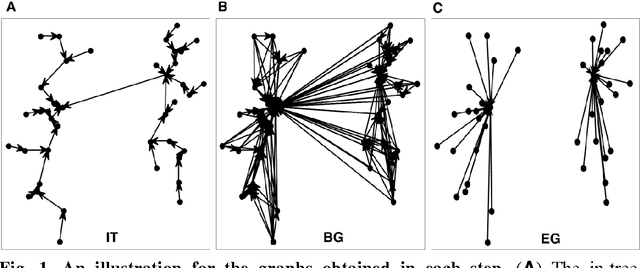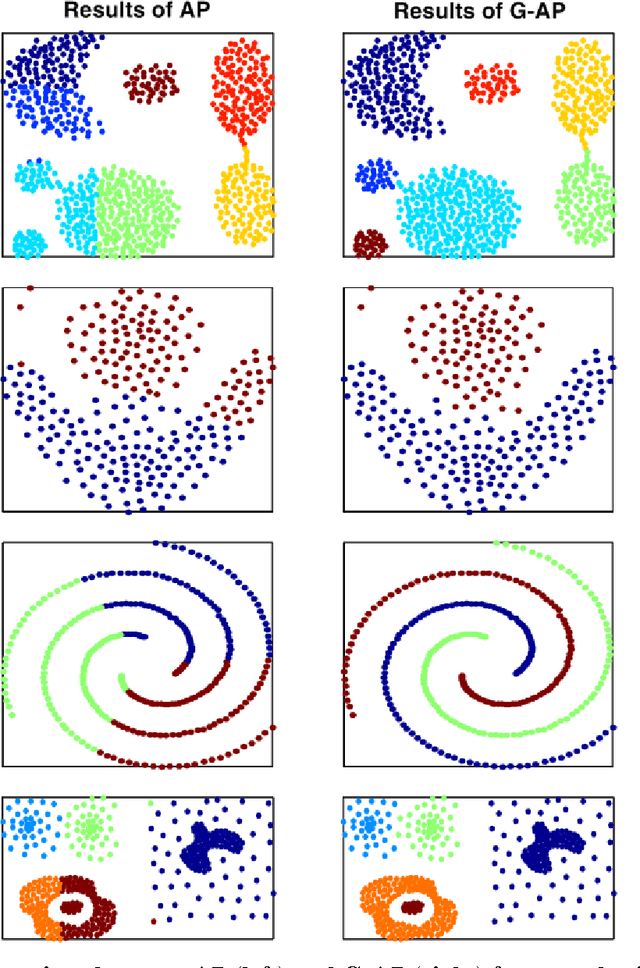Clustering based on the In-tree Graph Structure and Affinity Propagation
Paper and Code
Jan 29, 2018


A recently proposed clustering method, called the Nearest Descent (ND), can organize the whole dataset into a sparsely connected graph, called the In-tree. This ND-based Intree structure proves able to reveal the clustering structure underlying the dataset, except one imperfect place, that is, there are some undesired edges in this In-tree which require to be removed. Here, we propose an effective way to automatically remove the undesired edges in In-tree via an effective combination of the In-tree structure with affinity propagation (AP). The key for the combination is to add edges between the reachable nodes in In-tree before using AP to remove the undesired edges. The experiments on both synthetic and real datasets demonstrate the effectiveness of the proposed method.
 Add to Chrome
Add to Chrome Add to Firefox
Add to Firefox Add to Edge
Add to Edge